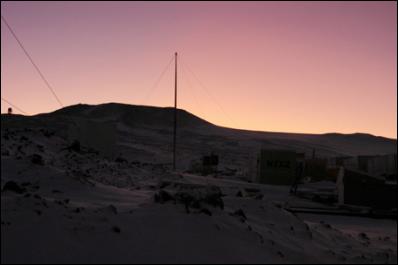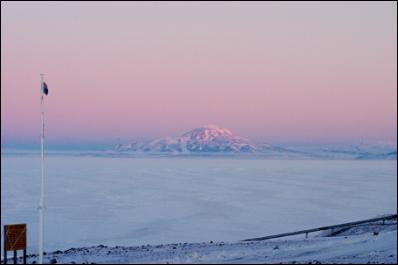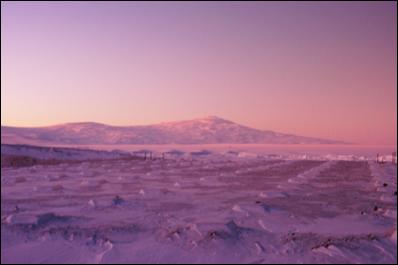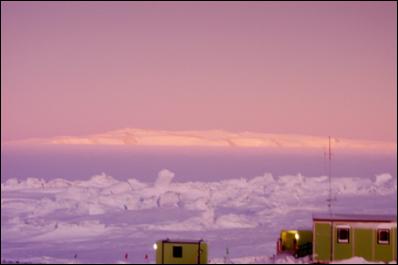Photo-Essay: Winter Antarctica Fly-In Departs ChCh
The first flight to Antarctica departed at 6am today from Christchurch, following four months of winter darkness down on the Ice. The annual winter flight programme, known as Winfly, coincides with the first sunrise over Scott Base.

Mt. Erebus Shadow: The shadow
of Mt.Erebus formed on small ice crystals floating in the
air.

Crater Hill: Crater Hill at
nearly 4pm - looking north-west towards the sunlight.

First sun on Mt. Discovery: The
first sunlight since April on Mt.Discovery, to the
south-west of Scott Base.

Mt. Terror: Looking east
towards Cape Mackay and Mt.Terror.

White Island: Looking south
towards White Island - now pink in the light - at 4pm.
Four C17 flights are planned over a six-day period supplying both the New Zealand and US Bases with science equipment, building and maintenance supplies along with fresh food, mail and key personnel for the forthcoming summer season.
“Winfly is the curtain-raiser for the start of the Antarctic season. After many months of planning and weeks of total darkness, the first flight is always a welcome sight for the staff at Scott Base and McMurdo Station, said Lou Sanson, CEO of Antarctica New Zealand.
Scott Base Winter Manager Dan Mathers said this year’s winter staff have worked particularly hard keeping Scott base operational and repairing damage from the biggest storm to hit Scott Base in 30 years.
“Everyone here is rejuvenated by the return of the daylight, and we’re now waiting patiently for the sun to appear over the horizon. Winfly is a lot like Christmas Eve. We're all looking forward to seeing new and familiar faces, and one of the biggest treats will be fresh fruit” said Dan Mathers.
Summer science activities also begin to gain momentum following on from Winfly. NIWA scientists will travel to Scott Base on the first Winfly flight to begin a series of measurements focused on watching the development of the ozone hole over Antarctica. Another group of researchers will be monitoring CO2 and other greenhouse gases in Antarctica, which has the cleanest air on Earth. This research aims to better understand global levels of these gases.
Mainbody flights start to Antarctica on 5 October.


 Gordon Campbell: On Why Leakers Are Essential To The Public Good
Gordon Campbell: On Why Leakers Are Essential To The Public Good ACT New Zealand: ACT New Zealand Celebration Brunch - David Seymour's First Speech as Deputy PM
ACT New Zealand: ACT New Zealand Celebration Brunch - David Seymour's First Speech as Deputy PM NZ Police: Operation Purple | Anti-Social Road User Gathering In Levin
NZ Police: Operation Purple | Anti-Social Road User Gathering In Levin New Zealand Defence Force: The Latest Update On The HMNZS Manawanui Response
New Zealand Defence Force: The Latest Update On The HMNZS Manawanui Response NZCTU: NZCTU Release Detailed Budget 2025 Analysis
NZCTU: NZCTU Release Detailed Budget 2025 Analysis Department of Conservation: DOC Reveals Surprising Toilet Paper Stats
Department of Conservation: DOC Reveals Surprising Toilet Paper Stats NZ Government: Consultation Opens On Sweeping Overhaul Of Primary Sector Regulations
NZ Government: Consultation Opens On Sweeping Overhaul Of Primary Sector Regulations


